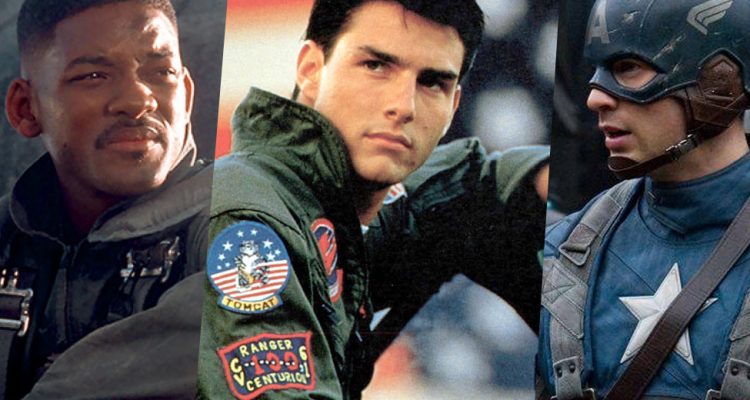 “Dick” (1999)
“Dick” (1999)
The Watergate scandal gets an affectionate ribbing in “Dick,” director Andrew Fleming’s funny and good-natured period lark about two ditzy young women, played by a young Kirsten Dunst and Michelle Williams, who unwittingly stumble into that infamous web of political treachery overseen by our onetime Commander-in-Chief, Richard Nixon. Like Kurt Vonnegut’s great comic novel “Jailbird,” which was also explicitly about Watergate, “Dick” is about what happens when ordinary people find themselves entrenched in a morass of malfeasance. It’s also a barbed and resonant comedy that comments slyly and unobtrusively on the inanities of a certain era of our American history. The film’s central pair of besties, Betsy (Dunst) and Arlene (Williams), come from opposite sides of the tracks. Betsy resides in a tony residence in Georgetown while Arlene lives in a grotty one-bedroom with her mother, just a stone’s throw away from where the Watergate meetings were taking place. When the girls get too close to the scandal for their own safety, the bellicose Nixon (Dan Hedaya) makes an effort to distract them by anointing them as dog sitters for the White House poodle, Checkers (in a moment of rage, Nixon threatens to feed the dog “to the Chinese”). The terrific supporting cast lends some considerable comic energy to some real-life parts: Hedaya is a hoot as Nixon, Harry Shearer pops up as G. Gordon Liddy, “Kids In The Hall” vets Bruce McCulloch and Dave Foley make appearances, and there’s even a small turn from an SNL-era Will Ferrell as one half of the journalistic duo of Woodward and Bernstein. Though undeniably a bit dated, “Dick is” is still a sharp and funny sideways look at a scandal that rocked America.
 “Top Gun” (1986)
“Top Gun” (1986)
In the world of President Dwayne Elizondo Mountain Dew Herbert Camacho (from “Idiocracy” again), if there was a new American Anthem in the future, it would surely be Harold Faltermeyer’s glorious anthemic “Top Gun” theme (which features wicked guitar licks from b’s longtime guitarist Steve Stevens; seriously, this hair is amazing). In many regards, “Top Gun” could be seen as the ne plus ultra American and patriotic film — military recruitment skyrocketed after the movie’s release in ’86. And its maverick, underdog, come-from-behind narrative driven by its rebellious protagonist (Tom Cruise, of course) is also a definitive example of indomitable American grit and determination. And of course, the picture in many ways is about outsiders and belonging; there’s no “I” in team after all. All this aside, Tony Scott’s classic action/romantic drama is still a kick to watch and a hallmark of the 1980s. Who doesn’t love the story of a cocky, young hotheaded pilot who can still learn a thing or two from a senior female officer, a sympathetic commander, a hard-ass general and a few bff/nemesis colleagues who urge him to do the right thing and fight off his neuroses? Some of its fromage aside, it’s a movie that’s hard to hate on and, audiences will fly as its wingman for years to come.
 “American Graffiti” (1973)
“American Graffiti” (1973)
When you’re young, the things you end up taking for granted as an adult end up defining you. It can be as simple as what kind of car you drive, where you hang out, or whether or not you listen to rock ‘n’ roll music. Not all of these things are universal adolescent practices. And yet they are undeniably hallmarks of a young person’s burgeoning sense of identity, certainly in the American middle class. This is something that George Lucas’s uncharacteristically personal breakout film “American Graffiti” — produced with the help of his friend and then-business partner Francis Ford Coppola — captures with pointillist precision and a fond sense of remembrance. Featuring a sprawling cast of future stars including Richard Dreyfuss, Ron Howard, Cindy Williams and Harrison Ford, “Graffiti” is a love letter to a bygone era of American life. It was, as anyone who lived through it remembers, not quite as simple and pure as films like this one have made it out to be. And yet “American Graffiti” makes no claims to realism. Instead, it is kind of a warm, wistful dream for a permanent summer that never really existed: a time when Wolfman Jack was on the radio and Mel’s Drive-In was the place to be on a Saturday night. As a document of suburban bonhomie during a very specific time in our nation’s history, “American Graffiti” still remains hard to beat.
 “Jaws” (1975)
“Jaws” (1975)
The film that David Fincher (and half his generation) claims made him never want to go swimming in the ocean again, Steven Spielberg’s “Jaws” is still remarkably scary and effective after all these years. It’s also, as some younger viewers might have forgotten, set during the 4th of July weekend at the fictional beach town of Amity Island (otherwise known as Martha’s Vineyard). It’s sunny, hot, and the girls are out in their bikinis — perfect time to hit the sandy shores for some beach-time fun, until a man-eating Great White begins to terrorize the town’s inhabitants. A pack of tough guys, including Richard Dreyfuss (fresh off “American Graffiti”), Roy Scheider and Robert Shaw, go after it in what famously turns out to be too small a boat. Of course, “Jaws” may be as much about America as a nation as “Raiders Of The Lost Ark” is about Cairo or Peru, but as an old-fashioned monster movie with the soul of a vintage action serial, there’s something very uniquely American about it. Spielberg’s films always carry with them a sense of sincere awe and wonderment, and “Jaws,” however terrifying it threatens to get during its more explosive moments, is no different. Spielberg is one of our premiere national mythmakers: He turns our wildest dreams into reality, and “Jaws” is one of his finest visions.

